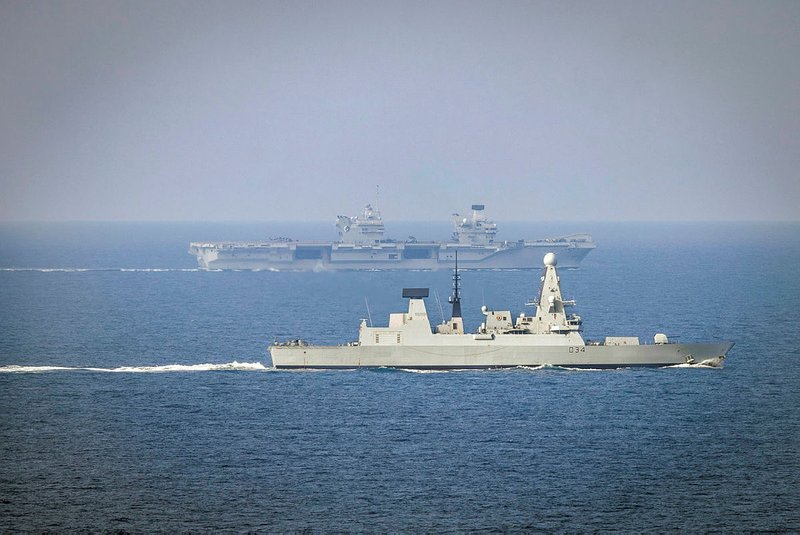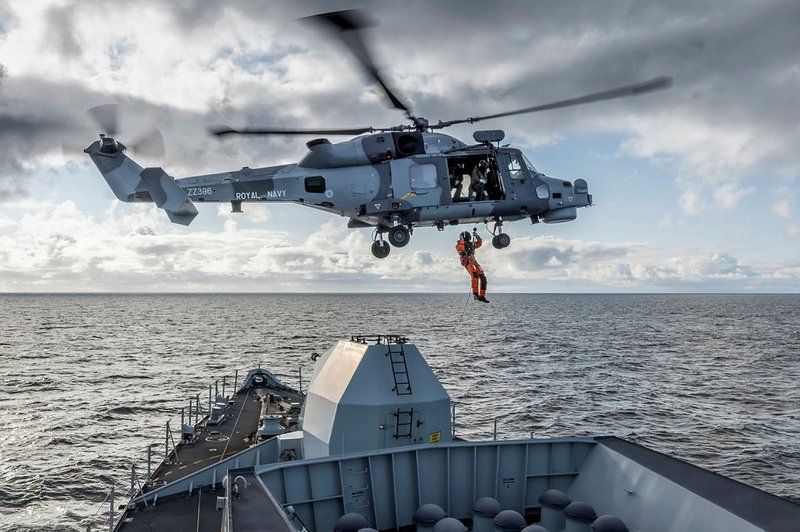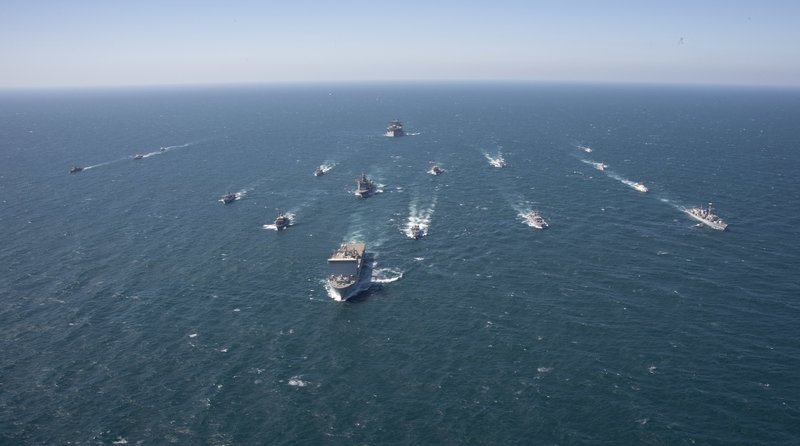How using synthetics can transform naval training
Delivering realistic and effective training can be a challenge in the maritime domain. Traditionally a significant part, particularly the collective element, has been conducted in the live environment, where resource constraints can limit the ability to reflect the complexity and multiple layers of the modern battlespace.
Maritime training is now evolving to tackle this challenge more effectively, specifically by turning to synthetics, as evidenced by the Royal Navy’s (RN’s) Platform Enabled Training Capability (PETC) programme... Continues below
Newsletter Sponsors:

Above: The RN’s PETC programme has used digital twins of platforms including a Queen Elizabeth-class carrier and a Type 45 destroyer. (Photo: UK MoD/Crown Copyright)
Speaking at DSEI in September, Nick Borbone, head of the maritime division at Inzpire, a subsidiary of QinetiQ, identified a number of factors which are driving this change. Although he associated these particularly with the RN response, they are just as applicable on a general basis.
Recalling the statement in the UK’s 2022 Maritime Operating Concept that ‘the threats have changed, evolving in a manner and a pace which tests our confidence in holding operational advantage’, Borbone observed that it is difficult to train against realistic and evolving threats in the live environment, particularly weapons such as hypersonic missiles with challenging profiles which cannot be replicated by real-world surrogates.

MVRsimulation’s VRSG: bringing military simulation training to life.
The proliferation of autonomous capabilities also represents a new threat, which is generating a need not only to develop concepts and train in the integration and employment of these new capabilities in maritime operations, but also to be able to defend against their hostile use.
Again, this can be difficult to achieve in the live environment, particularly in this developing area where resources are limited and tactics, techniques and procedures (TTP) are still evolving.
Borbone noted that there is a drive to conduct integrated training, both with other services and allies, which is a reflection of the emphasis on multi-domain operations.
There is also an increasing focus on task group operations, which meant that ‘platforms must be able to plug in seamlessly without a prolonged period of bedding in’. Forward deployed, and therefore more isolated, platforms also increase the training challenge.
Platform and personnel constraints do suggest there may be better ways of training than with the ship at sea. Borbone queried whether you need all the crew for specific areas of training which could be conducted alongside.
Finally, the UK’s drive towards Net Zero is generating the need to find new and innovative ways to train without consuming fuel.

Providing mission-critical training and equipment, this elevated level of innovation can only be provided by the best in the industry. Visit FlightSafety.com.
Borbone postulated that these factors are leading to an approach to maritime training that involves a greater use of synthetics than hitherto, balancing this with live activity, and with a greater focus on integration and evolution to meet the growing impact of autonomous platforms.
The advantages of synthetic training and simulation are well known: threats can be accurately represented, with appropriate signature profiles and speeds so that weapons systems and sensors can be stimulated correctly. Events can be conducted at a controlled pace, repeated to eliminate errors, and recorded for replay and debrief. Team members can be encouraged to analyse their own performance.
Resource constraints are rarely an issue, and geographical limitations are rare which supports mission rehearsal and there is little effect on the environment, which supports Net Zero aspirations. Synthetic training also offers an effective route to improving interoperability and integration with allies.
However, Borbone did identify some of the limitations of synthetic maritime training, which demonstrate the case for some live training to continue.
Synthetic training tends to be focussed purely on the warfare department, but ultimately the whole ship needs to be involved. The adage ‘float, move, fight’ essentially requires every element of the ship’s company to keep the platform working, providing engineering support or damage control as well as operating weapon systems.

Above: Using a real helicopter in a live environment can provide a sense of immediacy lacking in a simulator. (Photo: UK MoD/Crown Copyright)
Live training also gives operators confidence in their equipment, particularly with lower-tech weaponry – ‘you can’t beat putting live ammunition through the barrel’ as Borbone put it. In particular, this can generate real problems that need to be solved, thus adding to the practical experience of the operators. It also enables the validation of TTPs developed using simulation.
Also, synthetic training can be rather sterile; live training adds a real edge – the difference between a real helicopter deployed at range, with a live crew and issues of weather and fuel consumption to take into account, as opposed to a similar scenario in the simulator which can lack immediacy.

Borbone said that integration with allies will be a critical part of future maritime training, noting that synthetics allow for much greater use of distributed activity and therefore greater frequency of training events.
However, integration in the synthetic environment is not without its difficulties, particularly in terms of security. James Anderson of QinetiQ said that these are challenging but not insurmountable, with interconnection being the first challenge and security the second.
‘Trying to get a system that will work at UK or US or 5 Eyes or NATO eyes only or whatever is one of the biggest challenges, as there are some things that nations simply will not share. You have to identify what you are prepared to share,’ he said.

Above: Task forces are often international, so integration of multiple navies into training environments is a key consideration. (Photo: USN)
He added that one problem with complex simulations is that you can not only derive tactics from them but also a very accurate idea of weapon performance, which is data that is not shared between nations.
Anderson observed that a UK Carrier Strike Group (CSG) is always likely to include platforms from other nations, so integration issues have to be overcome if synthetic training is to form a part of the task group preparation and pre-deployment training.
The PETC exercise in June, which was conducted in partnership with QinetiQ, Inzpire and BAE Systems, demonstrated a step forward in the RN’s multi-platform synthetic training.
Three ships – a carrier, Type 45 destroyer and Type 23 frigate – were alongside in Portsmouth with an exercise control established on Portsdown Hill that generated tracks, tactical data links and voice communications.
Each vessel had a digital twin of its combat system installed and operations were conducted in all maritime environments: below, on and above the water. It provided what Anderson described as a ‘complex and comprehensive training package’.
Increasing synthetic training capability in the maritime domain could provide the ability for individual platforms to plug into exercises or task group training regardless of their location; to conduct multi-domain training including air, littoral and land; and to plug and play with key allies. The challenges of security and technical alignment remain but the PETC demonstrated what might eventually become possible.
Don't want to miss out on future Decisive Edge content? Make sure you are signed up to our email newsletters.













